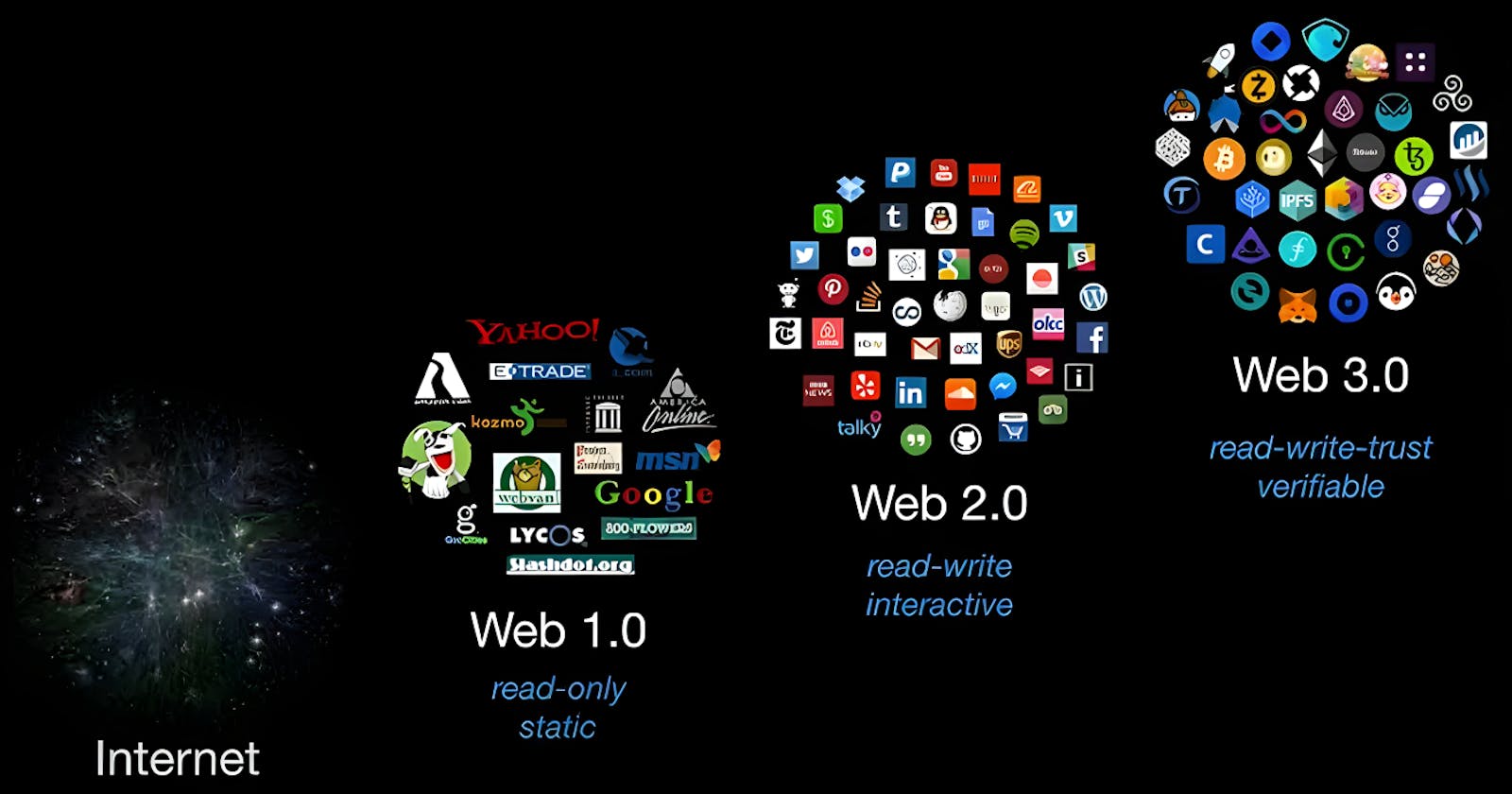Introduction
The World Wide Web has evolved through several phases, each marked by significant technological advancements and shifts in how we interact with information and services online. Today, we stand at the threshold of a new era, often referred to as Web3, which promises to reshape the digital landscape as we know it. In this article, we will explore the different types of webs that have preceded Web3 and delve into the main focus of this transformative concept.
Web1: The Static Era
The first iteration of the web, Web1, emerged in the early 1990s. It was a static, read-only platform, primarily used for displaying text and images. Web1 was essentially a digital library, with users acting as passive consumers of information. HTML (Hypertext Markup Language) was the predominant technology, and interactivity was limited to clicking hyperlinks to access other web pages.
Web2: The Interactive Social Web
Web2, which began to emerge around the mid-2000s, marked a significant departure from its predecessor. This era saw the advent of dynamic, interactive websites and the rise of social media platforms, such as Facebook, Twitter, and YouTube. User-generated content became the norm, and Web2 empowered individuals to create and share information seamlessly. JavaScript and AJAX (Asynchronous JavaScript and XML) played a vital role in enabling real-time interactions and dynamic content.
Web2's emphasis on user-generated content, social networking, and rich multimedia experiences revolutionized the internet. However, it also brought challenges related to data privacy, centralized control, and a growing concern over the monopolization of digital ecosystems by tech giants.
Web3: A Decentralized and Trustless Paradigm
Web3 represents the next evolutionary step in the development of the web. At its core, Web3 is characterized by decentralization, blockchain technology, and the concept of trustlessness. Let's dive into the key aspects of Web3:
Decentralization: Unlike Web2, which relies on centralized servers and intermediaries, Web3 seeks to distribute power and control across a decentralized network of nodes. This ensures that no single entity has undue influence or authority over the web's infrastructure. Decentralization promotes transparency, censorship resistance, and robustness against single points of failure.
Blockchain Technology: Web3 leverages blockchain and distributed ledger technologies to enable trustless transactions and data management. Blockchains provide secure, tamper-proof records of digital interactions and assets. They underpin cryptocurrencies like Bitcoin and Ethereum and serve as the foundation for various decentralized applications (dApps) and smart contracts.
Ownership and Control: Web3 emphasizes user ownership of data and digital assets. Users have greater control over their personal information and can grant permission for its use, enabling more granular data sharing. Smart contracts automate agreements, facilitating secure and transparent transactions without the need for intermediaries.
Interoperability: Web3 envisions a future where different blockchains and decentralized protocols can seamlessly interact. Interoperability standards are being developed to enable the transfer of assets and data across multiple blockchains, fostering a more connected and accessible web.
Digital Identity: Web3 aims to redefine digital identity by allowing individuals to own and control their identity information securely. This can reduce reliance on centralized identity providers and enhance privacy.
Conclusion
Web3 represents a radical departure from the web as we know it today. Its principles of decentralization, blockchain technology, and trustlessness offer a vision of a more equitable, secure, and user-centric internet. While Web3 is still in its early stages and faces various technical and adoption challenges, its potential to reshape online interactions and business models is undeniable. As we navigate the transition to Web3, it is crucial to prioritize privacy, security, and inclusivity to ensure that this new era truly benefits everyone on the internet.
Some Blockchain & Web 3 Developers you can connect with on Twitter...
Elisha David | Abraham Dominic Newton | Big Diamond | Alienate B | Steve | Yvonne Kagondu | Faizah Naserian |
Thanks for reading, If you’d like to see more posts on Nfts, Blockchain, Computer science, Linux, Python, Git, GitHub and Cybersecurity, follow me on my social media handles.

